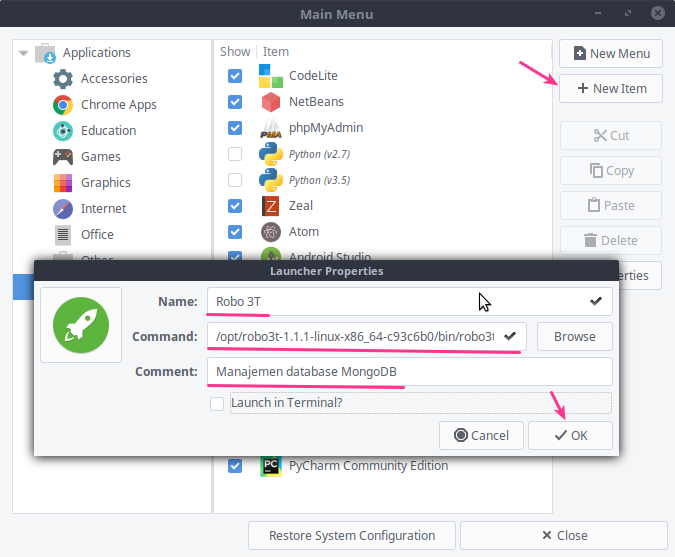

- Javascript execution interrupted robo 3t how to#
- Javascript execution interrupted robo 3t install#
- Javascript execution interrupted robo 3t windows#
We can then move on to the next steps of investigating the sharded cluster balancer or chunk size to fix a bigger issue, which Visual Explain helped us uncover. Shard 1 is handling almost twice the load. Now we know that the database isn’t distributing the workload evenly as expected. To test, we run an empty query and discover that: Take for example the snapshot below of crimes, a collection of about 2,486,000 documents, hosted on a database with two shards. Visual Explain can come in handy in spotting imbalanced loads when you’re querying a sharded database. MongoDB uses sharding to horizontally scale data, which it tries to evenly distribute across shards – but this is not always the case. The database detected that an appropriate index exists for the query, so it scanned a limited number of documents, instead of needlessly scanning each one.īy choosing the index scan, the database was also able to skip the sort stages, and instead went straight to fetching the documents, resulting in 41ms saved. Instead of using a collection scan which took 20ms, MongoDB chose an index scan which only took 10ms. Indeed, MongoDB runs the same query much faster, at 30ms (versus 71ms). Now that the index is set up, let’s run the same query again (and this time, we expect it to be faster).
Javascript execution interrupted robo 3t how to#
A “New Shell” window will appear in the right side pane of the window.Īt this point, we’re ready to perform an aggregation operation.Learn how to create an index in Studio 3T. To interact with that database, right-click on warlordDatabase, then select Open Shell in the menu. In this tutorial, we’ll be using the database warlordDatabase. You can see an example of this in the screenshot shown below: If Robo 3T successfully connected to a MongoDB deployment, it will list all the database(s) available within that connection. Performing Aggregation in a MongoDB Database using Robo 3T The sample dataset shown below will be used throughout this tutorial: If you plan to follow along with the examples in this tutorial, it’s helpful to be using the same data. To do this, open up the Robo 3T application and click the Connect button found at the lower right corner of the MongoDB Connections window: The first step will be to connect Robo 3T to a MongoDB deployment. Once you’ve confirmed that all the prerequisites are in place, you’re ready to get started with Robo 3%.
Javascript execution interrupted robo 3t install#
How to Install and Setup a MongoDB Server on MacOS
Javascript execution interrupted robo 3t windows#
How to Install and Setup MongoDB on Windows NOTE: If MongoDB has not yet been installed, you can refer to the following articles for instructions on how to install MongoDB on different operating systems: You’ll also need to ensure that Robo3T has been properly installed beforehand. You’ll need to make sure that MongoDB has been properly installed and is running in the background. There are a couple of important prerequisites: Prerequisitesīefore we look at some examples of aggregations, let’s take a moment to discuss the system requirements needed for this task. In this article, we’ll learn how to perform aggregation operations using the MongoDB Robo 3T GUI. Although there are many tasks you can perform using Robo 3T, this tutorial will focus on aggregations. Unlike other MongoDB user interfaces that simply emulate the Mongo shell, Robo 3T actually embeds the shell, offering users access to a command line interface as well as a user-friendly GUI. Robo 3T, formerly known as Robomongo, is a free, open-source GUI for MongoDB that’s fast and efficient to use.

If you’d prefer to use a visual interface when you perform MongoDB operations, Robo 3T may be a natural choice for you.


 0 kommentar(er)
0 kommentar(er)
